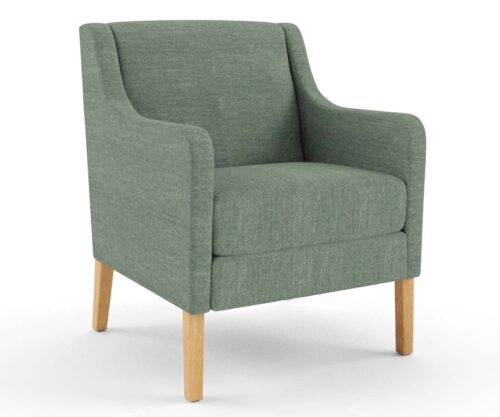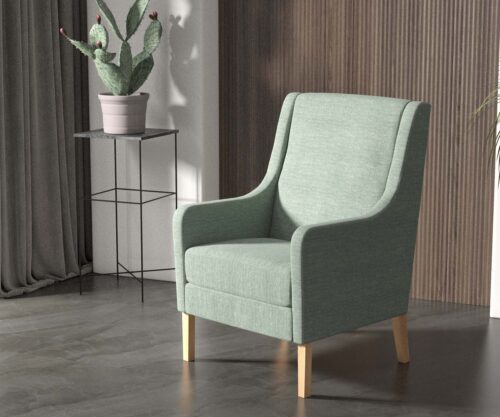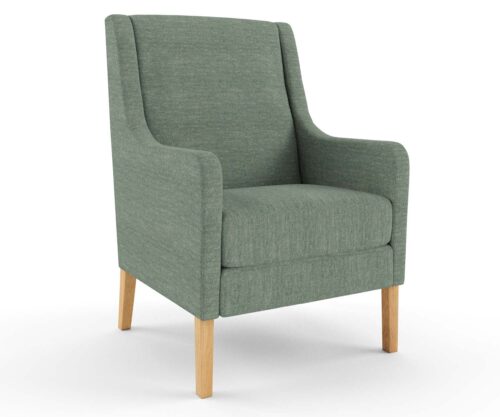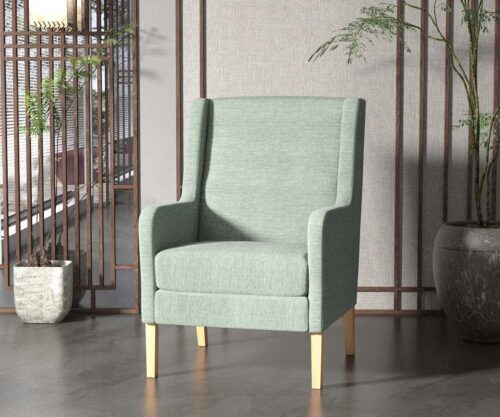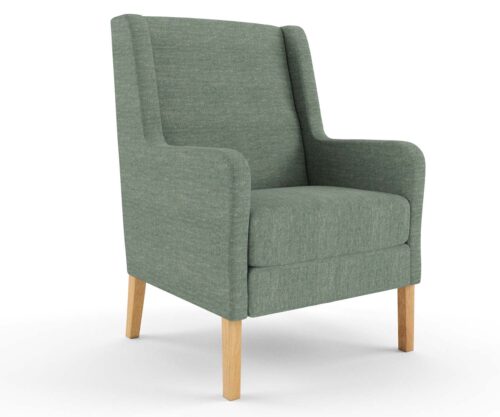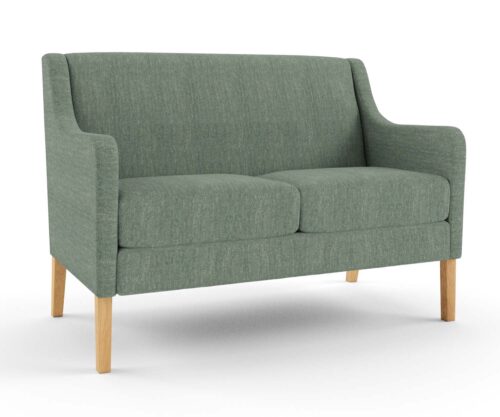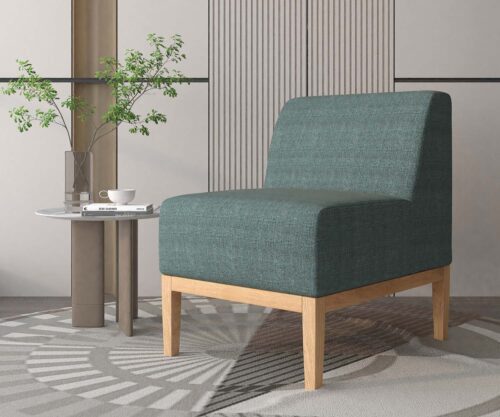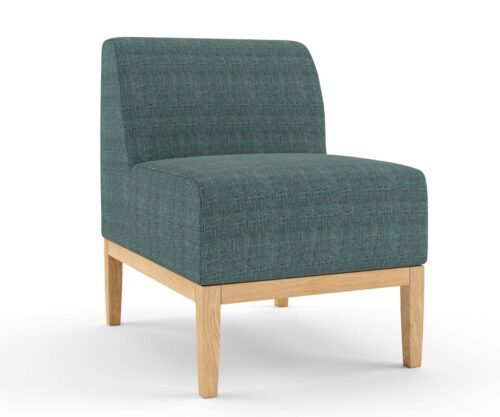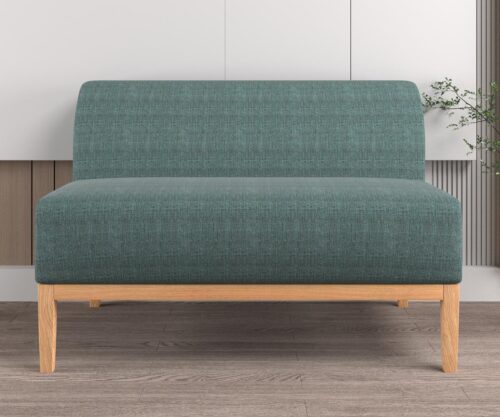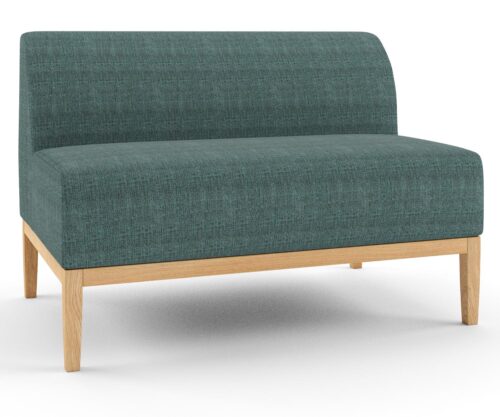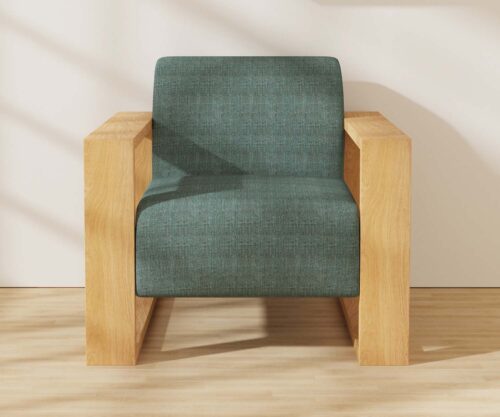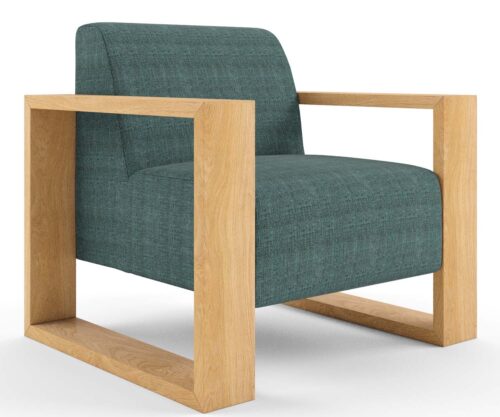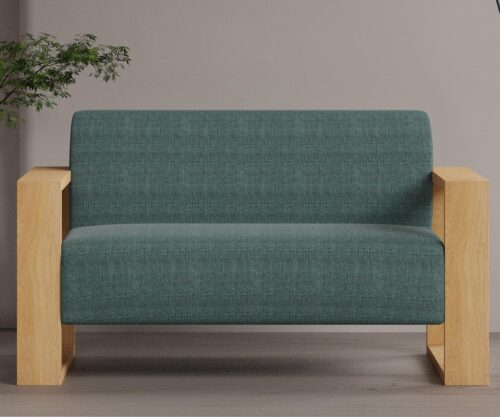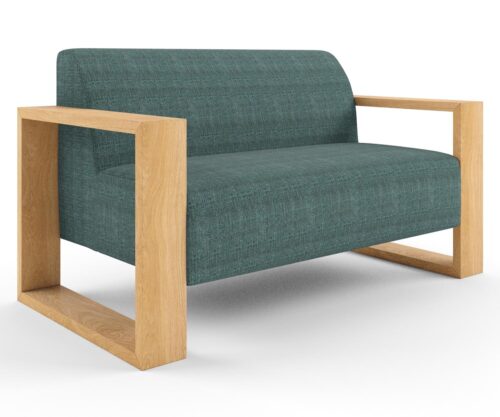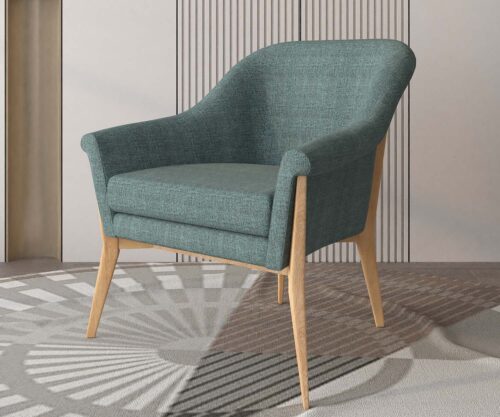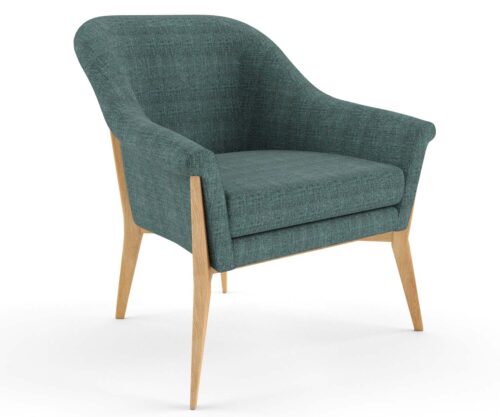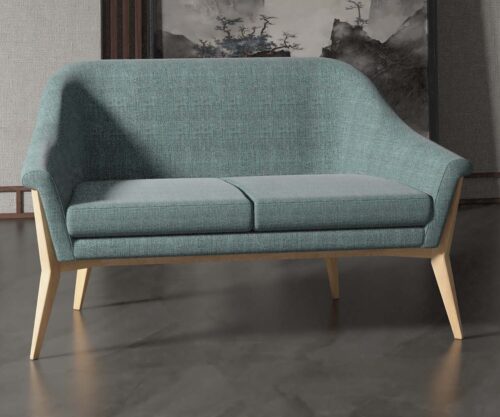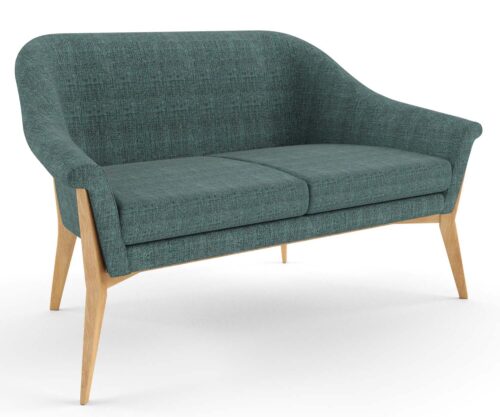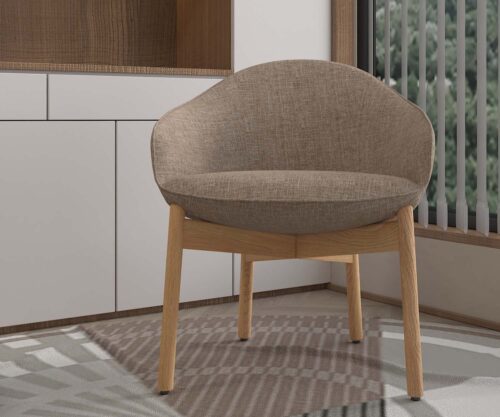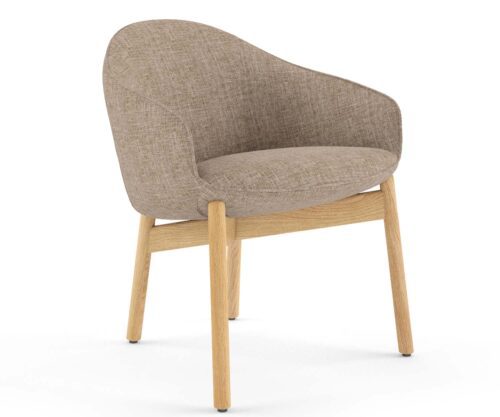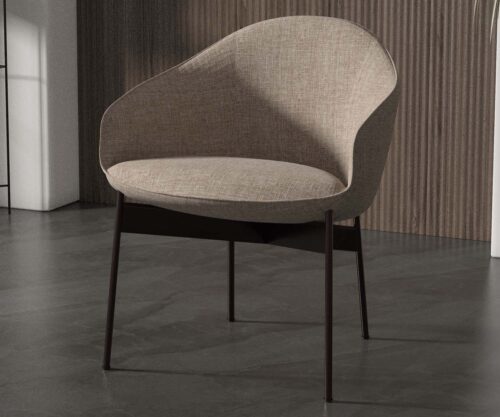Designing for Inclusion: 7 Key Elements of Wheelchair Accessible Furniture

Inclusive design is not just about meeting minimum standards; it’s about creating spaces that welcome and accommodate everyone. When it comes to furniture, particularly in settings like aged care facilities or retirement homes, ensuring accessibility is paramount. In this article, we’ll explore seven essential elements of wheelchair accessible furniture that not only prioritize functionality but also celebrate inclusivity.
1. Adjustable Height: Enhancing Accessibility and Versatility
One of the fundamental aspects of wheelchair accessible furniture is adjustable height. Whether it’s tables, desks, or countertops, the ability to modify the height ensures that individuals using wheelchairs can comfortably reach and utilize these surfaces. This feature not only enhances accessibility but also promotes independence and dignity.
- Accessibility for All: Adjustable height ensures that furniture can be tailored to meet the specific requirements of wheelchair users. By raising or lowering surfaces to optimal levels, individuals using wheelchairs can comfortably reach and interact with furniture without straining or experiencing discomfort. This accessibility empowers users to engage more fully in various activities, whether it’s dining, working, or socializing.
- Customizable Comfort: The versatility of adjustable height furniture allows for personalized comfort and convenience. Individuals have the flexibility to adjust furniture to their preferred height, ensuring ergonomic alignment and reducing the risk of strain or injury. Whether accommodating users of different heights or varying wheelchair configurations, adjustable height furniture adapts to meet individual needs, promoting overall well-being and satisfaction.
- Promoting Independence: Independence is a key aspect of quality of life for individuals with mobility challenges. Adjustable height furniture promotes independence by enabling users to independently adjust furniture to their desired height without assistance. This autonomy fosters a sense of empowerment and self-reliance, allowing individuals to maintain control over their environment and daily activities.
- Facilitating Interaction: In social and communal spaces, adjustable height furniture facilitates inclusive interaction among individuals of diverse abilities. By ensuring that furniture accommodates wheelchair users at the same level as standing individuals, it promotes eye contact, communication, and participation in group activities. This fosters a sense of belonging and equality, strengthening social connections and community engagement.
- Future-Proof Design: Adjustable height furniture exhibits a future-proof design approach that anticipates evolving needs and preferences. As the needs of users change over time or new individuals with different requirements join the community, adjustable height features ensure that furniture remains adaptable and inclusive. This longevity maximizes the value and usability of furniture investments, minimizing the need for costly replacements or modifications in the future.
2. Clearance Space: Navigating Surroundings Without Encountering Obstacles
Adequate clearance space around furniture is crucial for maneuvering wheelchairs. Designing furniture with sufficient clearance underneath allows wheelchair users to approach and position themselves comfortably. This consideration ensures that individuals can navigate their surroundings without encountering obstacles, promoting seamless movement and accessibility.
- Underneath Clearance: Underneath clearance refers to the space beneath furniture, such as tables, desks, and countertops. It’s essential to ensure that this area is free from obstructions to allow wheelchair users to approach the furniture comfortably. Sufficient underneath clearance enables individuals to position their wheelchairs close to the furniture, facilitating easy access and interaction without encountering barriers.
- Legroom and Knee Space: Providing adequate legroom and knee space is crucial for wheelchair users to sit comfortably at tables or desks. This involves designing furniture with sufficient space beneath the tabletop to accommodate the user’s legs and knees without feeling cramped or restricted. Ample legroom allows individuals to sit closer to the furniture, promoting better posture and ergonomic support during activities such as dining, working, or socializing.
- Turning Radius: Clearance space also encompasses the turning radius required for maneuvering a wheelchair around furniture. It’s essential to design furniture layouts that allow for ample space for wheelchair users to turn and navigate smoothly without encountering obstacles or tight corners. By ensuring sufficient turning radius, furniture design promotes independence and freedom of movement, enabling individuals to navigate their surroundings with ease.
- Accessible Pathways: In addition to clearance space around individual pieces of furniture, it’s crucial to consider the overall layout of the space to provide accessible pathways for wheelchair users. Clear pathways ensure unobstructed movement throughout the environment, allowing individuals to travel between rooms, corridors, and common areas without encountering barriers or obstacles. Designing furniture arrangements that maintain accessible pathways promotes inclusivity and enhances the overall usability of the space for all users.
- Safety Considerations: Clearance space is also integral to ensuring the safety of wheelchair users. By keeping pathways and maneuvering areas clear, the risk of accidents, such as collisions or entrapment, is minimized. Furniture design should prioritize safety by avoiding protruding edges, sharp corners, or potential hazards that could pose risks to wheelchair users. By considering safety in clearance space design, furniture contributes to creating a secure and supportive environment for individuals with mobility challenges.
3. Sturdy Construction: Supporting the Weight and Movement of Individuals
Stability and durability are essential characteristics of wheelchair accessible furniture. Robust construction ensures that furniture can support the weight and movement of individuals using wheelchairs without compromising safety. Reinforced frames and materials are key features that contribute to the reliability of accessible furniture, providing users with confidence and peace of mind.
- Support and Stability: Wheelchair users rely on furniture to provide stable support as they transition in and out of their chairs or when leaning on surfaces for assistance. Sturdy construction ensures that furniture remains steady and secure, minimizing the risk of accidents or injuries due to instability.
- Weight Bearing Capacity: Wheelchair accessible furniture must be capable of supporting the weight of individuals using wheelchairs without fear of structural failure. Reinforced frames, high-quality materials, and reliable joints are essential components that contribute to the furniture’s weight-bearing capacity, ensuring long-term durability and safety.
- Resistance to Wear and Tear: Furniture in high-traffic areas, such as common rooms or dining areas in aged care facilities, is subject to frequent use and potential abuse. Sturdy construction helps furniture withstand daily wear and tear, maintaining its structural integrity over time. This resilience prolongs the lifespan of furniture, reducing the need for frequent replacements and minimizing maintenance costs.
- Accessibility for All: A sturdy and stable furniture design ensures accessibility for individuals of all abilities. It instills confidence in wheelchair users, assuring them that the furniture can accommodate their needs safely and reliably. Additionally, caregivers and staff members can trust in the furniture’s stability, facilitating their assistance to residents without concerns about safety hazards.
- Peace of Mind: For both residents and caregivers, peace of mind is invaluable. Sturdy construction provides reassurance that furniture can withstand the rigors of daily use, offering a sense of security and reliability. Knowing that the furniture is built to last fosters a positive environment where residents can feel confident and supported in their daily activities.
4. Accessible Storage: Promoting Organization and Independence
Incorporating accessible storage solutions into furniture design is vital for promoting organization and independence. Features such as lower shelves, pull-out drawers, or adjustable compartments enable wheelchair users to conveniently store and access their belongings. By prioritizing accessible storage options, furniture design not only enhances functionality but also fosters autonomy and self-reliance.
- Lower Shelves and Drawers: Incorporating lower shelves and drawers within furniture allows wheelchair users to access storage spaces without straining or reaching beyond their comfortable range. These accessible compartments are positioned at an optimal height, enabling users to reach items with ease and without assistance. Whether it’s storing personal belongings, books, or supplies, lower storage solutions ensure that essentials are within reach, promoting independence and self-sufficiency.
- Pull-Out or Roll-Out Features: Implementing pull-out or roll-out storage features enhances accessibility by providing users with full visibility and easy access to stored items. These mechanisms allow storage compartments to extend outward, eliminating the need for users to bend or stretch excessively to retrieve items. Whether it’s a sliding drawer or a pull-out tray, these intuitive features simplify the process of accessing stored items, minimizing physical strain and enhancing usability for wheelchair users.
- Adjustable Shelving Systems: Utilizing adjustable shelving systems within furniture design offers flexibility and customization options to accommodate varying storage needs and preferences. These systems allow users to modify shelf heights and configurations to suit their requirements, ensuring that stored items are organized efficiently and accessible when needed. Whether it’s adjusting shelf heights to accommodate larger items or creating designated spaces for specific belongings, adjustable shelving promotes versatility and user-centric design.
- Accessible Closet Space: Including accessible closet space within furniture design provides wheelchair users with dedicated storage areas for clothing, linens, or personal items. Features such as lower hanging rods, pull-down racks, and adjustable shelves optimize closet accessibility, allowing users to store and retrieve garments with ease. By prioritizing accessible closet space, furniture design enhances organization and facilitates daily routines for individuals with mobility impairments.
- Clearance and Maneuverability: Ensuring adequate clearance and maneuverability around storage areas is essential for facilitating seamless access for wheelchair users. Designing furniture with ample space for wheelchair maneuvering allows users to approach storage compartments comfortably and navigate their surroundings without restrictions. By minimizing barriers and obstructions, furniture design promotes fluid movement and accessibility, enhancing the overall user experience.
5. Comfortable Seating: Ergonomically Designed Seating
Comfort is a critical aspect of wheelchair accessible furniture. Ergonomically designed seating that provides adequate support and cushioning ensures comfort for individuals spending extended periods in wheelchairs. Features such as contoured backs, adjustable armrests, and pressure-relieving padding contribute to the overall well-being and comfort of users, enhancing their overall experience.
- Ergonomic Design: Wheelchair accessible seating should be ergonomically designed to support the natural contours of the body and promote proper posture. Features such as contoured backrests, lumbar support, and adjustable seat depths ensure optimal comfort and spinal alignment, reducing the risk of discomfort or pain associated with prolonged sitting.
- Pressure Relief: Individuals who use wheelchairs are susceptible to pressure ulcers and discomfort due to prolonged sitting. Incorporating pressure-relieving features such as memory foam cushions, gel inserts, or air-filled seat cushions helps distribute pressure evenly and alleviate stress on bony prominences, enhancing comfort and preventing skin breakdown.
- Adjustability: Customization is key when it comes to wheelchair accessible seating. Adjustable features such as seat height, armrest height and width, backrest angle, and footrest position allow users to tailor the seating to their unique preferences and needs. Providing options for adjustment ensures that individuals can achieve optimal comfort and support, enhancing their overall seating experience.
- Breathable Materials: Choosing breathable and moisture-wicking upholstery materials is essential for maintaining comfort and skin integrity. Fabrics that allow air circulation and moisture evaporation help prevent overheating and perspiration buildup, reducing the risk of skin irritation and discomfort. Additionally, antimicrobial and easy-to-clean fabrics contribute to a hygienic seating environment.
- Accessible Features: In addition to comfort, wheelchair accessible seating should incorporate features that facilitate ease of use and accessibility. This may include removable or swing-away armrests to facilitate lateral transfers, accessible controls for adjusting seat positioning, and intuitive mechanisms for reclining or tilting the seat. Ensuring that seating options are user-friendly enhances usability and promotes independence for individuals with mobility limitations.
- Supportive Padding: Adequate padding and cushioning are essential for providing comfort and preventing pressure points. High-density foam padding with varying firmness levels provides optimal support while maintaining comfort. Strategic placement of padding in key areas such as the seat, backrest, and armrests helps distribute weight evenly and alleviate pressure, enhancing overall comfort and reducing fatigue.
- Durability and Longevity: Comfortable seating should not only provide immediate comfort but also withstand the rigors of daily use over time. Selecting durable and high-quality materials for construction, such as reinforced frames and commercial-grade upholstery, ensures longevity and maintains comfort and support throughout the lifespan of the furniture. Investing in durable seating options minimizes the need for frequent replacements and ensures continued comfort for users.
6. Accessible Controls and Features: Enhancing Usability for those with Varying Abilities
Integrating accessible controls and features into furniture design enhances usability for individuals with varying abilities. Whether it’s adjustable mechanisms, easy-to-reach switches, or intuitive interfaces, incorporating user-friendly elements ensures that furniture is inclusive and accommodating. By prioritizing accessible controls, furniture design becomes more intuitive and user-centric, catering to diverse needs and preferences.
- Intuitive Design: Accessible controls should be designed with simplicity and intuitiveness in mind. Clear labeling, understandable icons, and logical placement of controls make it easier for users to interact with the furniture without confusion or frustration. For example, tactile buttons with raised symbols can assist users with visual impairments in locating and operating controls effectively.
- Adaptive Technology: Incorporating adaptive technology into furniture design can significantly enhance accessibility. This includes features such as motorized adjustments for height, tilt, or recline, which can be controlled through user-friendly interfaces. Remote controls or smartphone apps with customizable settings provide flexibility and convenience for users to personalize their experience according to their specific needs.
- Proximity Sensors: Proximity sensors can be integrated into furniture to facilitate hands-free operation, particularly for individuals with limited mobility or dexterity. These sensors detect the presence of users and automatically activate or adjust relevant features, such as opening drawers or adjusting seating positions. By eliminating the need for manual interaction, proximity sensors enhance accessibility and ease of use.
- Voice Command Integration: Voice command technology allows users to control furniture functions using verbal commands, offering a hands-free alternative for individuals with mobility impairments or conditions such as arthritis. Voice-activated assistants or voice recognition software can be integrated into furniture design, enabling users to adjust settings, activate features, or access information effortlessly through voice commands.
- Customizable Settings: Providing customizable settings and presets allows users to tailor the furniture to their individual preferences and requirements. Adjustable parameters such as seat height, backrest angle, or lumbar support can be programmed and saved as personalized profiles, ensuring optimal comfort and functionality for each user. Customizable settings accommodate diverse needs and promote inclusivity in furniture design.
- Emergency Features: Incorporating emergency features into furniture design ensures safety and peace of mind for users in case of unexpected situations. This may include emergency stop buttons or quick-release mechanisms that allow users to swiftly exit or adjust the furniture in emergency scenarios. Clear signage and instructions further enhance accessibility by guiding users on how to operate these features effectively.
- Feedback Mechanisms: Providing feedback mechanisms such as visual or auditory cues can help users confirm their actions and understand the status of the furniture’s functions. LED indicators, audio prompts, or tactile feedback signals provide reassurance and guidance, particularly for users with sensory impairments. Feedback mechanisms enhance usability and confidence in interacting with the furniture.
7. Aesthetic Appeal: Beyond Functionality
While functionality is paramount, aesthetic appeal should not be overlooked in wheelchair accessible furniture design. Thoughtful consideration of design elements such as colour, texture, and form ensures that furniture complements its surroundings while promoting inclusivity. By marrying style with accessibility, furniture design creates inviting and visually appealing spaces that celebrate diversity and inclusion.
- Colour Palette: Choosing the right colour palette for wheelchair accessible furniture can have a significant impact on the overall look and feel of a space. Neutral tones and earthy hues create a calming and inviting atmosphere, while pops of vibrant colours can add visual interest and personality. It’s essential to consider the preferences and sensory needs of users when selecting colours, ensuring that they feel comfortable and at ease in their environment.
- Texture and Material Selection: The texture and material of wheelchair accessible furniture not only affect its visual appeal but also its tactile qualities. Incorporating tactile elements such as soft fabrics, smooth surfaces, or natural textures adds depth and dimension to furniture design. Additionally, choosing materials that are durable, easy to clean, and resistant to wear and tear ensures longevity and practicality in aged care and retirement living environments.
- Form and Design Details: Attention to detail in the form and design of wheelchair accessible furniture can elevate its aesthetic appeal. Clean lines, streamlined silhouettes, and minimalist design elements create a modern and sophisticated look that complements contemporary interiors. Additionally, incorporating subtle design details such as decorative accents, subtle patterns, or unique shapes adds visual interest without compromising functionality.
- Integration with Surroundings: Wheelchair accessible furniture should seamlessly integrate with its surroundings, enhancing the overall aesthetic of the space. Whether it’s blending into existing decor or serving as a focal point, furniture design should harmonize with the architectural style and design theme of the environment.
- Inclusive Design Principles: Aesthetic appeal in wheelchair accessible furniture should not come at the expense of inclusivity. Embracing inclusive design principles ensures that aesthetic considerations do not compromise accessibility or usability. By prioritizing features such as clear sightlines, unobstructed pathways, and intuitive layouts, furniture design remains inclusive and accommodating to users of all abilities.
Finally, designing wheelchair accessible furniture involves more than just meeting basic requirements—it’s about creating spaces that empower and embrace everyone. By incorporating these seven essential elements into furniture design, we can foster inclusivity, promote independence, and enrich the lives of all individuals, regardless of their abilities. Inclusive design isn’t just about accommodating differences; it’s about celebrating diversity and creating environments where everyone feels welcome and valued.
Australian Made Aged Care Furniture: Fit-For-Purpose Furniture for Elderly Australians
More News
Designing for Inclusion: 7 Key Elements of Wheelchair Accessible Furniture

Inclusive design is not just about meeting minimum standards; it’s about creating spaces that welcome and accommodate everyone. When it comes to furniture, particularly in settings like aged care facilities or retirement homes, ensuring accessibility is paramount. In this article, we’ll explore seven essential elements of wheelchair accessible furniture that not only prioritize functionality but also celebrate inclusivity.
1. Adjustable Height: Enhancing Accessibility and Versatility
One of the fundamental aspects of wheelchair accessible furniture is adjustable height. Whether it’s tables, desks, or countertops, the ability to modify the height ensures that individuals using wheelchairs can comfortably reach and utilize these surfaces. This feature not only enhances accessibility but also promotes independence and dignity.
- Accessibility for All: Adjustable height ensures that furniture can be tailored to meet the specific requirements of wheelchair users. By raising or lowering surfaces to optimal levels, individuals using wheelchairs can comfortably reach and interact with furniture without straining or experiencing discomfort. This accessibility empowers users to engage more fully in various activities, whether it’s dining, working, or socializing.
- Customizable Comfort: The versatility of adjustable height furniture allows for personalized comfort and convenience. Individuals have the flexibility to adjust furniture to their preferred height, ensuring ergonomic alignment and reducing the risk of strain or injury. Whether accommodating users of different heights or varying wheelchair configurations, adjustable height furniture adapts to meet individual needs, promoting overall well-being and satisfaction.
- Promoting Independence: Independence is a key aspect of quality of life for individuals with mobility challenges. Adjustable height furniture promotes independence by enabling users to independently adjust furniture to their desired height without assistance. This autonomy fosters a sense of empowerment and self-reliance, allowing individuals to maintain control over their environment and daily activities.
- Facilitating Interaction: In social and communal spaces, adjustable height furniture facilitates inclusive interaction among individuals of diverse abilities. By ensuring that furniture accommodates wheelchair users at the same level as standing individuals, it promotes eye contact, communication, and participation in group activities. This fosters a sense of belonging and equality, strengthening social connections and community engagement.
- Future-Proof Design: Adjustable height furniture exhibits a future-proof design approach that anticipates evolving needs and preferences. As the needs of users change over time or new individuals with different requirements join the community, adjustable height features ensure that furniture remains adaptable and inclusive. This longevity maximizes the value and usability of furniture investments, minimizing the need for costly replacements or modifications in the future.
2. Clearance Space: Navigating Surroundings Without Encountering Obstacles
Adequate clearance space around furniture is crucial for maneuvering wheelchairs. Designing furniture with sufficient clearance underneath allows wheelchair users to approach and position themselves comfortably. This consideration ensures that individuals can navigate their surroundings without encountering obstacles, promoting seamless movement and accessibility.
- Underneath Clearance: Underneath clearance refers to the space beneath furniture, such as tables, desks, and countertops. It’s essential to ensure that this area is free from obstructions to allow wheelchair users to approach the furniture comfortably. Sufficient underneath clearance enables individuals to position their wheelchairs close to the furniture, facilitating easy access and interaction without encountering barriers.
- Legroom and Knee Space: Providing adequate legroom and knee space is crucial for wheelchair users to sit comfortably at tables or desks. This involves designing furniture with sufficient space beneath the tabletop to accommodate the user’s legs and knees without feeling cramped or restricted. Ample legroom allows individuals to sit closer to the furniture, promoting better posture and ergonomic support during activities such as dining, working, or socializing.
- Turning Radius: Clearance space also encompasses the turning radius required for maneuvering a wheelchair around furniture. It’s essential to design furniture layouts that allow for ample space for wheelchair users to turn and navigate smoothly without encountering obstacles or tight corners. By ensuring sufficient turning radius, furniture design promotes independence and freedom of movement, enabling individuals to navigate their surroundings with ease.
- Accessible Pathways: In addition to clearance space around individual pieces of furniture, it’s crucial to consider the overall layout of the space to provide accessible pathways for wheelchair users. Clear pathways ensure unobstructed movement throughout the environment, allowing individuals to travel between rooms, corridors, and common areas without encountering barriers or obstacles. Designing furniture arrangements that maintain accessible pathways promotes inclusivity and enhances the overall usability of the space for all users.
- Safety Considerations: Clearance space is also integral to ensuring the safety of wheelchair users. By keeping pathways and maneuvering areas clear, the risk of accidents, such as collisions or entrapment, is minimized. Furniture design should prioritize safety by avoiding protruding edges, sharp corners, or potential hazards that could pose risks to wheelchair users. By considering safety in clearance space design, furniture contributes to creating a secure and supportive environment for individuals with mobility challenges.
3. Sturdy Construction: Supporting the Weight and Movement of Individuals
Stability and durability are essential characteristics of wheelchair accessible furniture. Robust construction ensures that furniture can support the weight and movement of individuals using wheelchairs without compromising safety. Reinforced frames and materials are key features that contribute to the reliability of accessible furniture, providing users with confidence and peace of mind.
- Support and Stability: Wheelchair users rely on furniture to provide stable support as they transition in and out of their chairs or when leaning on surfaces for assistance. Sturdy construction ensures that furniture remains steady and secure, minimizing the risk of accidents or injuries due to instability.
- Weight Bearing Capacity: Wheelchair accessible furniture must be capable of supporting the weight of individuals using wheelchairs without fear of structural failure. Reinforced frames, high-quality materials, and reliable joints are essential components that contribute to the furniture’s weight-bearing capacity, ensuring long-term durability and safety.
- Resistance to Wear and Tear: Furniture in high-traffic areas, such as common rooms or dining areas in aged care facilities, is subject to frequent use and potential abuse. Sturdy construction helps furniture withstand daily wear and tear, maintaining its structural integrity over time. This resilience prolongs the lifespan of furniture, reducing the need for frequent replacements and minimizing maintenance costs.
- Accessibility for All: A sturdy and stable furniture design ensures accessibility for individuals of all abilities. It instills confidence in wheelchair users, assuring them that the furniture can accommodate their needs safely and reliably. Additionally, caregivers and staff members can trust in the furniture’s stability, facilitating their assistance to residents without concerns about safety hazards.
- Peace of Mind: For both residents and caregivers, peace of mind is invaluable. Sturdy construction provides reassurance that furniture can withstand the rigors of daily use, offering a sense of security and reliability. Knowing that the furniture is built to last fosters a positive environment where residents can feel confident and supported in their daily activities.
4. Accessible Storage: Promoting Organization and Independence
Incorporating accessible storage solutions into furniture design is vital for promoting organization and independence. Features such as lower shelves, pull-out drawers, or adjustable compartments enable wheelchair users to conveniently store and access their belongings. By prioritizing accessible storage options, furniture design not only enhances functionality but also fosters autonomy and self-reliance.
- Lower Shelves and Drawers: Incorporating lower shelves and drawers within furniture allows wheelchair users to access storage spaces without straining or reaching beyond their comfortable range. These accessible compartments are positioned at an optimal height, enabling users to reach items with ease and without assistance. Whether it’s storing personal belongings, books, or supplies, lower storage solutions ensure that essentials are within reach, promoting independence and self-sufficiency.
- Pull-Out or Roll-Out Features: Implementing pull-out or roll-out storage features enhances accessibility by providing users with full visibility and easy access to stored items. These mechanisms allow storage compartments to extend outward, eliminating the need for users to bend or stretch excessively to retrieve items. Whether it’s a sliding drawer or a pull-out tray, these intuitive features simplify the process of accessing stored items, minimizing physical strain and enhancing usability for wheelchair users.
- Adjustable Shelving Systems: Utilizing adjustable shelving systems within furniture design offers flexibility and customization options to accommodate varying storage needs and preferences. These systems allow users to modify shelf heights and configurations to suit their requirements, ensuring that stored items are organized efficiently and accessible when needed. Whether it’s adjusting shelf heights to accommodate larger items or creating designated spaces for specific belongings, adjustable shelving promotes versatility and user-centric design.
- Accessible Closet Space: Including accessible closet space within furniture design provides wheelchair users with dedicated storage areas for clothing, linens, or personal items. Features such as lower hanging rods, pull-down racks, and adjustable shelves optimize closet accessibility, allowing users to store and retrieve garments with ease. By prioritizing accessible closet space, furniture design enhances organization and facilitates daily routines for individuals with mobility impairments.
- Clearance and Maneuverability: Ensuring adequate clearance and maneuverability around storage areas is essential for facilitating seamless access for wheelchair users. Designing furniture with ample space for wheelchair maneuvering allows users to approach storage compartments comfortably and navigate their surroundings without restrictions. By minimizing barriers and obstructions, furniture design promotes fluid movement and accessibility, enhancing the overall user experience.
5. Comfortable Seating: Ergonomically Designed Seating
Comfort is a critical aspect of wheelchair accessible furniture. Ergonomically designed seating that provides adequate support and cushioning ensures comfort for individuals spending extended periods in wheelchairs. Features such as contoured backs, adjustable armrests, and pressure-relieving padding contribute to the overall well-being and comfort of users, enhancing their overall experience.
- Ergonomic Design: Wheelchair accessible seating should be ergonomically designed to support the natural contours of the body and promote proper posture. Features such as contoured backrests, lumbar support, and adjustable seat depths ensure optimal comfort and spinal alignment, reducing the risk of discomfort or pain associated with prolonged sitting.
- Pressure Relief: Individuals who use wheelchairs are susceptible to pressure ulcers and discomfort due to prolonged sitting. Incorporating pressure-relieving features such as memory foam cushions, gel inserts, or air-filled seat cushions helps distribute pressure evenly and alleviate stress on bony prominences, enhancing comfort and preventing skin breakdown.
- Adjustability: Customization is key when it comes to wheelchair accessible seating. Adjustable features such as seat height, armrest height and width, backrest angle, and footrest position allow users to tailor the seating to their unique preferences and needs. Providing options for adjustment ensures that individuals can achieve optimal comfort and support, enhancing their overall seating experience.
- Breathable Materials: Choosing breathable and moisture-wicking upholstery materials is essential for maintaining comfort and skin integrity. Fabrics that allow air circulation and moisture evaporation help prevent overheating and perspiration buildup, reducing the risk of skin irritation and discomfort. Additionally, antimicrobial and easy-to-clean fabrics contribute to a hygienic seating environment.
- Accessible Features: In addition to comfort, wheelchair accessible seating should incorporate features that facilitate ease of use and accessibility. This may include removable or swing-away armrests to facilitate lateral transfers, accessible controls for adjusting seat positioning, and intuitive mechanisms for reclining or tilting the seat. Ensuring that seating options are user-friendly enhances usability and promotes independence for individuals with mobility limitations.
- Supportive Padding: Adequate padding and cushioning are essential for providing comfort and preventing pressure points. High-density foam padding with varying firmness levels provides optimal support while maintaining comfort. Strategic placement of padding in key areas such as the seat, backrest, and armrests helps distribute weight evenly and alleviate pressure, enhancing overall comfort and reducing fatigue.
- Durability and Longevity: Comfortable seating should not only provide immediate comfort but also withstand the rigors of daily use over time. Selecting durable and high-quality materials for construction, such as reinforced frames and commercial-grade upholstery, ensures longevity and maintains comfort and support throughout the lifespan of the furniture. Investing in durable seating options minimizes the need for frequent replacements and ensures continued comfort for users.
6. Accessible Controls and Features: Enhancing Usability for those with Varying Abilities
Integrating accessible controls and features into furniture design enhances usability for individuals with varying abilities. Whether it’s adjustable mechanisms, easy-to-reach switches, or intuitive interfaces, incorporating user-friendly elements ensures that furniture is inclusive and accommodating. By prioritizing accessible controls, furniture design becomes more intuitive and user-centric, catering to diverse needs and preferences.
- Intuitive Design: Accessible controls should be designed with simplicity and intuitiveness in mind. Clear labeling, understandable icons, and logical placement of controls make it easier for users to interact with the furniture without confusion or frustration. For example, tactile buttons with raised symbols can assist users with visual impairments in locating and operating controls effectively.
- Adaptive Technology: Incorporating adaptive technology into furniture design can significantly enhance accessibility. This includes features such as motorized adjustments for height, tilt, or recline, which can be controlled through user-friendly interfaces. Remote controls or smartphone apps with customizable settings provide flexibility and convenience for users to personalize their experience according to their specific needs.
- Proximity Sensors: Proximity sensors can be integrated into furniture to facilitate hands-free operation, particularly for individuals with limited mobility or dexterity. These sensors detect the presence of users and automatically activate or adjust relevant features, such as opening drawers or adjusting seating positions. By eliminating the need for manual interaction, proximity sensors enhance accessibility and ease of use.
- Voice Command Integration: Voice command technology allows users to control furniture functions using verbal commands, offering a hands-free alternative for individuals with mobility impairments or conditions such as arthritis. Voice-activated assistants or voice recognition software can be integrated into furniture design, enabling users to adjust settings, activate features, or access information effortlessly through voice commands.
- Customizable Settings: Providing customizable settings and presets allows users to tailor the furniture to their individual preferences and requirements. Adjustable parameters such as seat height, backrest angle, or lumbar support can be programmed and saved as personalized profiles, ensuring optimal comfort and functionality for each user. Customizable settings accommodate diverse needs and promote inclusivity in furniture design.
- Emergency Features: Incorporating emergency features into furniture design ensures safety and peace of mind for users in case of unexpected situations. This may include emergency stop buttons or quick-release mechanisms that allow users to swiftly exit or adjust the furniture in emergency scenarios. Clear signage and instructions further enhance accessibility by guiding users on how to operate these features effectively.
- Feedback Mechanisms: Providing feedback mechanisms such as visual or auditory cues can help users confirm their actions and understand the status of the furniture’s functions. LED indicators, audio prompts, or tactile feedback signals provide reassurance and guidance, particularly for users with sensory impairments. Feedback mechanisms enhance usability and confidence in interacting with the furniture.
7. Aesthetic Appeal: Beyond Functionality
While functionality is paramount, aesthetic appeal should not be overlooked in wheelchair accessible furniture design. Thoughtful consideration of design elements such as colour, texture, and form ensures that furniture complements its surroundings while promoting inclusivity. By marrying style with accessibility, furniture design creates inviting and visually appealing spaces that celebrate diversity and inclusion.
- Colour Palette: Choosing the right colour palette for wheelchair accessible furniture can have a significant impact on the overall look and feel of a space. Neutral tones and earthy hues create a calming and inviting atmosphere, while pops of vibrant colours can add visual interest and personality. It’s essential to consider the preferences and sensory needs of users when selecting colours, ensuring that they feel comfortable and at ease in their environment.
- Texture and Material Selection: The texture and material of wheelchair accessible furniture not only affect its visual appeal but also its tactile qualities. Incorporating tactile elements such as soft fabrics, smooth surfaces, or natural textures adds depth and dimension to furniture design. Additionally, choosing materials that are durable, easy to clean, and resistant to wear and tear ensures longevity and practicality in aged care and retirement living environments.
- Form and Design Details: Attention to detail in the form and design of wheelchair accessible furniture can elevate its aesthetic appeal. Clean lines, streamlined silhouettes, and minimalist design elements create a modern and sophisticated look that complements contemporary interiors. Additionally, incorporating subtle design details such as decorative accents, subtle patterns, or unique shapes adds visual interest without compromising functionality.
- Integration with Surroundings: Wheelchair accessible furniture should seamlessly integrate with its surroundings, enhancing the overall aesthetic of the space. Whether it’s blending into existing decor or serving as a focal point, furniture design should harmonize with the architectural style and design theme of the environment.
- Inclusive Design Principles: Aesthetic appeal in wheelchair accessible furniture should not come at the expense of inclusivity. Embracing inclusive design principles ensures that aesthetic considerations do not compromise accessibility or usability. By prioritizing features such as clear sightlines, unobstructed pathways, and intuitive layouts, furniture design remains inclusive and accommodating to users of all abilities.
Finally, designing wheelchair accessible furniture involves more than just meeting basic requirements—it’s about creating spaces that empower and embrace everyone. By incorporating these seven essential elements into furniture design, we can foster inclusivity, promote independence, and enrich the lives of all individuals, regardless of their abilities. Inclusive design isn’t just about accommodating differences; it’s about celebrating diversity and creating environments where everyone feels welcome and valued.
Australian Made Aged Care Furniture: Fit-For-Purpose Furniture for Elderly Australians
Commercial furniture by room
Based in Brisbane, we’re an Australian manufacturer of aged care furniture, retirement living furniture, hospital & healthcare furniture, hotel & accommodation furniture and student accommodation furniture. We also supply a range of commercial office furniture.
Discover the FHG Look Book: Your Source of Inspiration for Quality Australian-Made Commercial Furniture
- Quality Craftsmanship: See why we’ve been a trusted partner for over 25 years.
- Local Excellence: Learn how our Brisbane team ensures the highest standards.
- Inspiration and Ideas: Find innovative furniture solutions for any environment.
Don’t miss the opportunity to transform your commercial space with FHG’s expertly crafted furniture. Download the FHG Look Book today and start your journey towards exceptional design and quality.


